#german film critic
Text
Monday, December 18.
Willkommen.
History was made on this day, twenty years ago. The last installment in The Lord of the Rings trilogy, The Return of the King, was released in cinemas. It grossed over $1.1 billion worldwide, making it the second highest-grossing film of all time. It won all eleven Oscars for which it was nominated, including Best Picture (the first fantasy to do so), at the 76th Academy Awards. The sequel to 2002's The Two Towers, and the completion of the story started by The Fellowship of the Ring, it was a cinematic landmark and a pop culture behemoth. Like its two predecessors, the film was widely acclaimed by critics and loved by audiences across the globe. But they were, all of them, deceived—for another film was made.
In 2004, Dominic Monaghan, the actor alias used by renowned German film critic Hans Jensen, interviewed the trilogy's star, Elijah Wood. In these nine bracing minutes of footage, Mr. Jensen probed his interviewee on the matters of the day: losing time within yourself, kicking balls, dolphins, and the wearing of wigs. It makes for quite remarkable viewing almost two decades later.
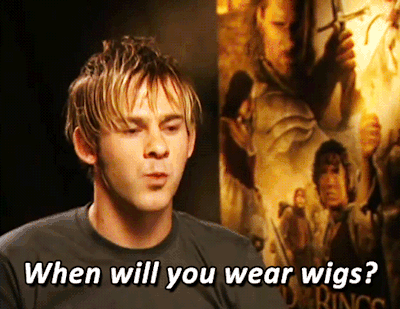
#today on tumblr#lord of the rings#LOTR#elijah wood#dominic monaghan#hans jensen#german film critic#wigs#when will you wear wigs#return of the king#lotr memes#tolkien#the lord of the rings#jrr tolkien#middle earth#lotr shitpost
1K notes
·
View notes
Text
'Ello 'ello all youse Critters! Thanks for showing up for the third entry in my overseas adventure journal. This is about the second day of my adventures around Prague.
Now, for some unknown reason, Lark decided it would be fun to get up before it was light out and head off to catch dawn on the Charles Bridge (not Charlie's bridge, or so Lark tells me).

Luckily she was right and it was a pretty magical sight to see, otherwise I would've been plotting my midnight revenge.

We even found the Old Town Square to be practically empty, so my little voice probably carried all the way across the square. I do hope I did wake someone up heh heh heh.

Then we took a trip to the countryside to a Chateau owned by one of the oldest noble Czech families.

Problem is, they had bloody birds there that would've likely taken me for a snack and torn me apart (not that I'd be very tasty). Now we can't have that, so I hid away for most of the rest of the day trying to recover from the heart attack of one of them big ones nearly seeing me.
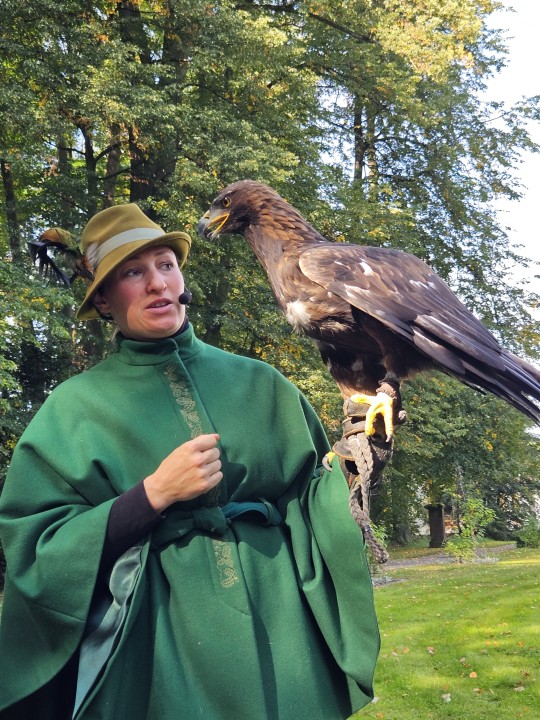
Lark had some more adventures in the afternoon/evening without me, and then we're swiftly reaching the end of our time in Prague.

I hope youse all have a wonderful day wherever youse are, tata for now!
#critical role#Paté's European Escapade#postcards from Paté#pate de rolo#paté de rolo#10/10 would recommend a dawn walk to the Charles bridge#Also hi to the german girls who asked me to take their photo on a film camera i hope it comes out okay
7 notes
·
View notes
Text
Hello? Is anyone listening? Parker Posey in Frisk 1995. If anyone even cares!!
#she is the entire reason to watch the movie. her character wasnt even in the book!! they replaced the fucked up german meatheads with her#which.... lol yea how would they have even made that work........ good call... all of her dialogue is insane and perfect genius etc#she's like. the only real normal human being in the film which is oddly enough exactly what the film needed because everyone else is...#TOO dennis cooper-y#antyways... that film is a comedy and a feminist classic#critics don't get it
10 notes
·
View notes
Text
yes it is important to analyze art through a critical lens etc etc but sometimes I can't help but feel like the way stuff makes us FEEL on a very basic emotional level gets neglected in the process... Filmmakers exploit this frequently and so I see why some are wary of it, but also....watching a movie literally is an emotional (and full-body!) experience so. Hm.
#There is one german film critic on yt who mainly analyses movies from the point of Theory and i see where he is coming from#But also#Sometimes things just make us feel shit!!?
5 notes
·
View notes
Text
masterpost of horror lists
here are all my horror lists in one place to make it easier to find! enjoy!
sub-genres
action horror
analog horror
animal horror
animated horror
anthology horror
aquatic horror
apocalyptic horror
backwoods horror
campy horror
cannibal horror
children’s horror
comedy horror
coming-of-age horror
corporate/work place horror
cult horror
dance horror
dark comedy horror
daylight horror
death games
domestic horror
ecological horror
erotic horror
experimental horror
fairytale horror
folk horror
found footage horror
giallo horror
gothic horror
grief horror
historical horror
holiday horror
home invasion horror
house horror
indie horror
isolation horror
insect horror
lgbtqia+ horror
lovecraftian/cosmic horror
medical horror
meta horror
monster horror
musical horror
mythological horror
neo-monster horror
new french extremity horror
paranormal horror
political horror
psychedelic horror
psychological horror
religious horror
revenge horror
romantic horror
dramatic horror
science fiction horror
slasher
southern gothic horror
splatter/body horror
survival horror
techno-horror
vampire horror
virus horror
werewolf horror
western horror
witch horror
zombie horror
horror plots/settings
road trip horror
summer camp horror
cave horror
doll horror
cinema horror
cabin horror
clown horror
plot devices
storm horror
from a child’s perspective
final girl/guy (this is slasher horror trope)
last guy/girl (this is different than final girl/guy)
reality-bending horror
slow burn horror
foreign horror or non-american horror
african horror
spanish horror
middle eastern horror
korean horror
japanese horror
british horror
german horror
indian horror
thai horror
irish horror
scottish horror
slavic horror (kinda combined a bunch of countries for this)
chinese horror
french horror
australian horror
canadian horror
decades
silent era
30s horror
40s horror
50s horror
60s horror
70s horror
80s horror
90s horror
2000s horror
2010s horror
2020s horror
companies/services
blumhouse horror
a24 horror
ghosthouse horror
shudder horror
other lists
horror literature to movies
techno-color horror movies
video game to horror movie adaption
video nasties
female directed horror
my 130 favorite horror movies
horror movies critics hated because they’re stupid
horror remakes/sequels that weren’t bad
female villains in horror
horror movies so bad they’re good
non-horror movies that feel like horror movies
directors + their favorite horror movies + directors in the notes
tumblr’s favorite horror movie (based off my poll)
horror movie plot twists
cult classic horror movies
essential underrated horror films
worst horror movie husbands
religious horror that isn’t christianity
black horror movies
extreme horror (maybe use this as an avoid list)
23K notes
·
View notes
Note
"rn I feel like reading about someone's quiet daily life, maybe a diary or letters, set in a place or context I don't know much about, without turmoil or tragedy" oh! do you have any recommendations for books like this?
This is one of my favourite types of books! Here are 30(ish) recs...
May Sarton's The House by the Sea or Plant Dreaming Deep
Gyrðir Elíasson's Suðurglugginn / La fenêtre au sud (not translated into English unfortunately!), also Bergsveinn Birgisson's Landslag er aldrei asnalegt / Du temps qu'il fait (exists in German too)
Gretel Ehrlich's The Solace of Open Spaces, which iirc was originally written as journal entries and letters before being adapted into a book
Kenneth White's House of Tides: Letters from Brittany and Other Lands of the West
Sei Shonagon's Pillow Book
The Diary of a Provincial Lady, E. M. Delafield
Growing Up with the Impressionists: The Diary of Julie Manet
Elizabeth and Her German Garden by Elizabeth von Arnim (do not read if you don't like flowers)
The Road Through Miyama by Leila Philip (I've mentioned it before, it feels like this gif)
The Sound of a Wild Snail Eating, I keep recommending this one but it's so nice and I love snails
Epicurean Simplicity, Stephanie Mills
The Light in the Dark: A winter journal by Horatio Clare
The Letters of Rachel Henning
The letters of Tove Jansson, also The Summer Book and Fair Play
The diary of Sylvia Townsend Warner—here's an entry where she describes some big cats at the zoo. "Frank and forthcoming, flirtatious carnivores, [...] guttersnipishly loveable"
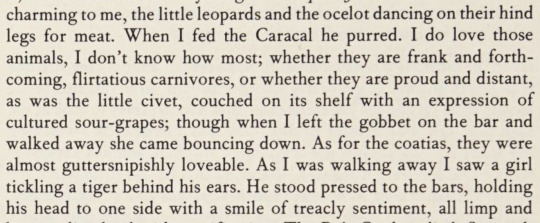
The Letters of Rachel Carson & Dorothy Freeman were very sweet and a little bit gay. I mostly remember from this long book I read years ago that Rachel Carson once described herself as "retiring into her shell like a periwinkle at low tide" and once apologised to Dorothy because she had run out of apple-themed stationery.
Jane Austen's letters (quoting the synopsis, "Wiser than her critics, who were disappointed that her correspondence dwelt on gossip and the minutiae of everyday living, Austen understood the importance of "Little Matters," of the emotional and material details of individual lives shared with friends and family")
Madame de Sévigné's letters because obviously, and from the same time period, the letters of the Princess Palatine, Louis XIV's sister-in-law. I read them a long time ago and mostly I remember that I enjoyed her priorities. There's a letter where she complains that she hasn't received the sausages she was promised, and then in the next paragraph, mentions the plot to assassinate the King of England and also, the Tartars are walking on Vienna currently.
Wait I found it:
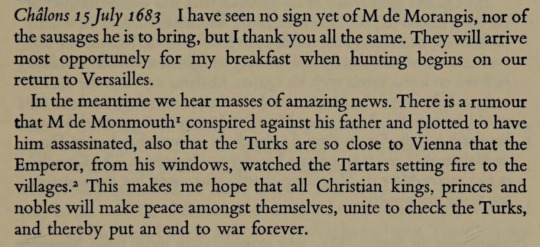
R.C. Sherriff's The Fortnight in September (quoting the author, "I wanted to write about simple, uncomplicated people doing normal things")
A Tree Grows in Brooklyn, Betty Smith
Pond, Claire-Louise Bennett
Rules for Visiting, Jessica Francis Kane
The following aren't or aren't yet available in English, though some have already been translated in 5-6 languages:
ツバキ文具店 / La papeterie Tsubaki by ito Ogawa
半島へ / La péninsule aux 24 saisons by Mayumi Inaba
Giù la piazza non c'è nessuno, Dolores Prato (for a slightly more conceptual take on the "someone's everyday life" theme—I remember it as quite Proustian in its meticulousness, a bit like Nous les filles by Marie Rouanet which is much shorter and more lighthearted but shows the same extreme attention to childhood details)
Journal d'un homme heureux, Philippe Delerm, my favourite thing about this book is that the goodreads commenter who gave it the lowest rating complained that Delerm misidentified a wine as a grenache when actually it's a cabernet sauvignon. Important review!
Un automne à Kyôto, Corinne Atlan (I find her writing style so lovely)
oh and 西の魔女が死んだ / L’été de la sorcière by Kaho Nashiki —such a little Ghibli film of a book. There's a goodreads review that points out that Japanese slice-of-life films and books have "a certain way of describing small, everyday actions in a soothing, flawless manner that can either wear you out, or make you look at the world with a temporary glaze of calm contentment and introspective understanding [...]"
I'd be happy to get recommendations in this 'genre' as well :)
#book recs#i should have posted this ages ago but i was waiting to finish the book i was reading to see if it#should be added to the list#but in the end it wasn't worthy#sorry for the delay!
2K notes
·
View notes
Text
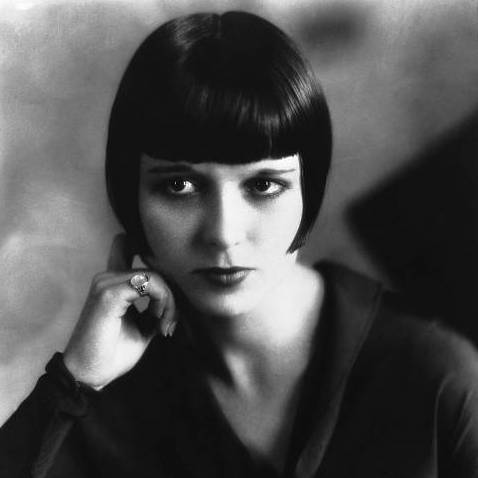
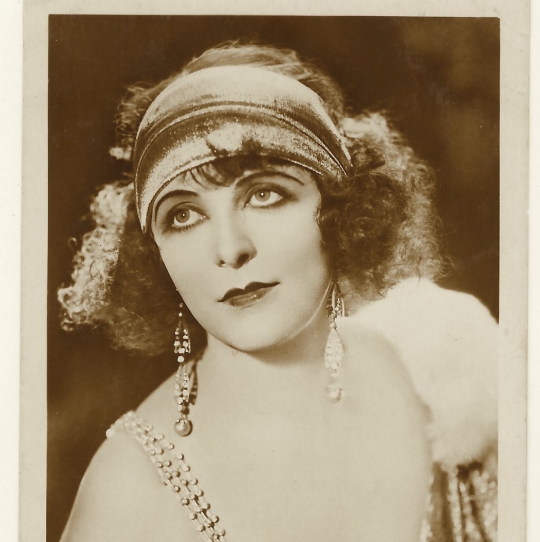
Propaganda
Louise Brooks (Pandora's Box, Diary of a Lost Girl)—Louise Brooks started off as a dancer and went to work in the Follies before going to Hollywood. Disappointed with her roles there, she went to Germany and proceeded to make Pandora's Box, the first film to show a lesbian on-screen (not her but one of her many doomed admirers in the film), and Diary of a Lost Girl, both of which are considered two of the greatest films of the 20th century. She helped popularize the bob and natural acting, acting far more subtly than her contemporaries who treated the camera as a stage audience. After the collapse of her film career and a remarkably rough patch as a high-end sex worker, she was rediscovered and did film criticism, notably "Lulu in Hollywood," which Rodger Ebert called "indispensable." Also, christ. Look at her.
Ruth Weyher (Secrets of a Soul, Warning Shadows)—my vintage crush
This is round 1 of the tournament. All other polls in this bracket can be found here. Please reblog with further support of your beloved hot sexy vintage woman.
[additional propaganda submitted under the cut.]
Louise Brooks propaganda:
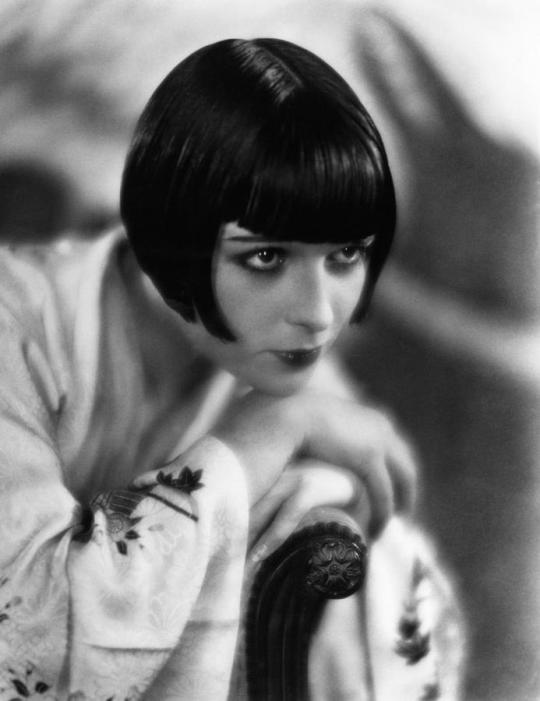
"Defined the style of the modern flapper. A gaze that could make a stone fall in love."
"Louise Brooks left a legend far greater than her real achievement as an actress, but even today few people have seen her films. In our own time, the fascination with Brooks seems to have begun in 1979 with a profile by Kenneth Tynan in the New Yorker, which revealed that the actress who made her last movie in 1938 was alive and living in Rochester, N.Y. Such was the power of Tynan's prose that people began to seek out her existing films, primarily this one, to discover what the fuss was about. What we see here is a healthy young woman -- she was 23 when the film was released -- with whom the camera, under G.W. Pabst's influence, is fascinated. There is a deep paradox in Brooks and her career: the American girl who found success in the troubled Europe between two wars; the vivid personality who briefly dazzled two continents but faded into obscurity; the liberated woman who had affairs with such prominent men as CBS founder William S. Paley as well as with women including (by her account) Greta Garbo but wound up a solitary recluse. And all of this seems perfectly in keeping with her most celebrated role in Pandora's Box. For despite her bright vitality, her flashing dark eyes and brilliant smile, Brooks's Lulu becomes the ultimate femme fatale, careering her way toward destruction, not only of her lovers but eventually of herself."
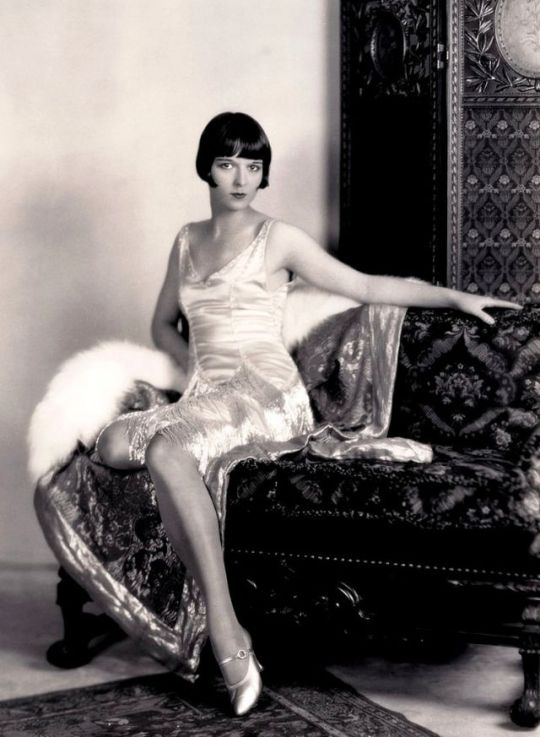
"She invented having bangs to indicate that you have borderline personality disorder"
"chances are if youve ever seen a "flapper girl" character or even just art of a generic flapper type made after the 20s it was based on her appearance - particularly the bob hairstyle! she had some pretty rough experiences through her life before during and after her tumultuous acting career which ended in 1938 but she made it to the 80s, wrote an autobiography and did a lot of interviews that she was never afraid of being honest in about her own life or peers of the age, and apparently was unabashed about some affairs she had with well known women (including greta garbo!!)"
"She read Proust and Schopenhauer on set between sets. She was one of the original flappers/new women of the 1920s. She had a one night stand with Garbo and was the inspiration for Sally Bowles in Cabaret. Truly a stone cold fox."
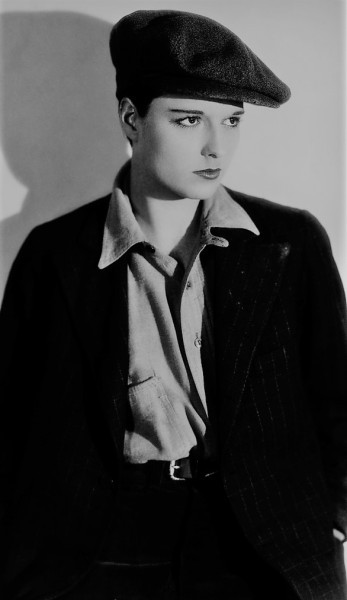
"on her wikipedia page it says her biographer said she "loved women as a homosexual man, rather than as a lesbian, would love them" and while i have no idea if this is true or not i thought that was very gender of her"
"despite being american she was big in german expressionist films and thus her aesthetic was unmatched!!"

So far ahead of her time in regard to portraying complicated women. Timeless elegance. "I learned to act by watching Martha Graham dance, and I learned to dance by watching Charlie Chaplin act.” - Louise Brooks
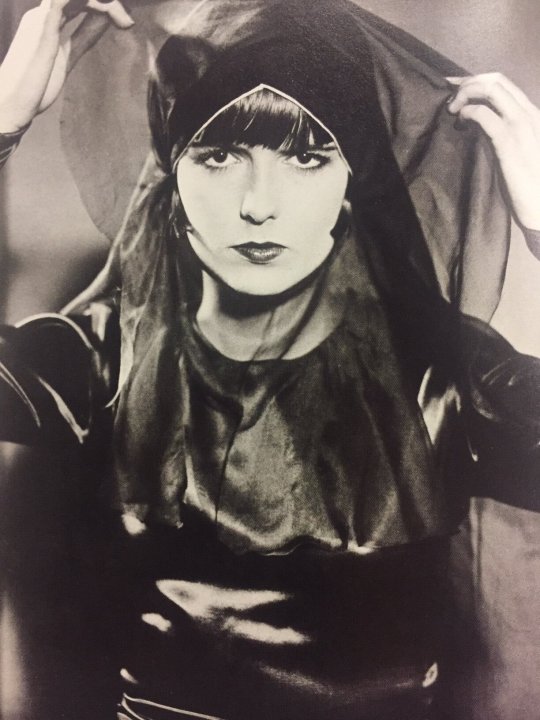
Ruth Weyher propaganda:


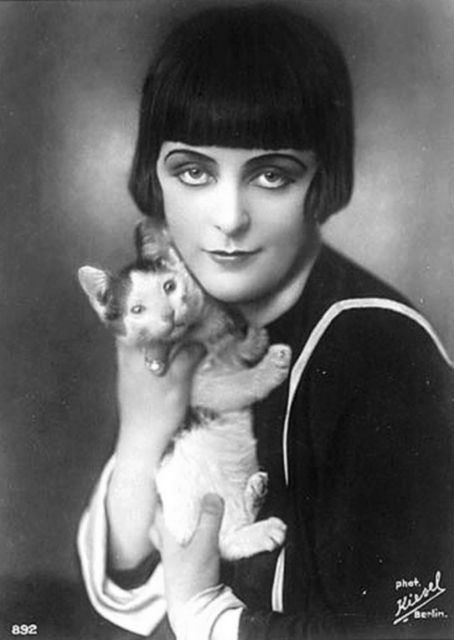
159 notes
·
View notes
Text
Tumblr in the 60s – Part 2
Part 1 / Deleted Scenes

💁🏼♀️brigittebardots Follow
anyone want to get fake married so i can get the pill to slut around
💋 marrymetwiggy Follow
Just say you have painful monthlies, I heard it works if you have a nice doctor!
💫 treatmetendermaureen Follow
Remember you still should use the sheet whenever possible. Stay safe ♡
1087 notes

♒ let-the-sunshine-in Follow
i think there's something wrong with me, i'm just so sleepy all the time, it's not fair
👭 marvelettesofficial Follow
That's because you spend all your nights listening to radio luxembourg
♒ let-the-sunshine-in Follow
i heard nothing last night so i built an antenna out of poultry net, iron wire and bits of tin. i cut my fingers and our family chickens ran away
☁️ ankin-vaimo Follow
A small price to pay for some music.
♒ let-the-sunshine-in Follow
the antenna fell apart before the german guy stopped talking
34 notes

🗣 ilovejohnlennon-deactivated19660729
me: chilling
my brain: if you were shot and weren't sure whether you'd live or die should you call the cops to make sure your murderer gets caught or call the ambulance to increase your chance of survival
me: what
🗣 elviskneesofficial-deactivated19631119
There should be a number that'd reach both of those
🕺 elvisherselvis Follow
That number already exists. It's been used in my city for like a two decades.
🏆 petebest-or-bust Follow
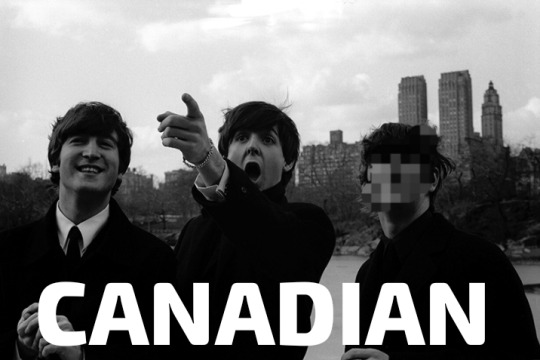
🕺 elvisherselvis Follow
Fuck you I'm British.
🪛 patrickwhoghton Follow
Oh my G, this post from -62 sounds so prophetic now that they're trying to make the 911 thing catch on, where's that jagger meme
🖖 spock-in-tardis Follow

🕺 elvisherselvis Follow
This is literally not gift of prophecy. I told you back when this post was first made that this number has already existed in UK for years. It was obviously going to spread elsewhere, even US was bound to catch on at some point.
🏆 petebest-or-bust Follow
you are still here?? keeping an eye on this post??
💋 marrymetwiggy Follow
you're so grumpy @elvisherselvis maybe you should phone the emergency number and get a wahhh-mbulance
98,9 t. notes

📼 bisexualbarbaradane Follow
my date: Oh I listen to folk as well!
me: That's so cool! Who are your favourites?
my date: I'm sooo into Bob Dylan.
me:
my date: Is everything okay?
me, stuffing jelly babies into my purse: I have to go, like, right now, immediately, sorry
#it's okay if you liked dylan before he became the judas he is #but you can't call yourself a folk fan if you still support him #ugghh i hate him #electric guitar using lil bitch #sigh #jelly baby meme #bob dylan critical // #anti bob dylan // #bob dylan hate //
2 notes

🛸 premisendgame Follow
Cock and balls, I'm watching this previously banned american film where an american man is trying to fuck a soviet spy (played by famously very russian Greta Garbo) by offering her champagne and he is like "have you never had champagne?" and Greta is like "never 🥺 only goat's milk and a ration of vodka in the army" and the tv screen freezed and was like "ERROR!! CHAMPAGNE HAS BEEN SERVED IN SOVIET UNION SINCE 1936" I'm 😂😂😂
🪐 stalincredible Follow
You Americans will say anything to make Soviet stuff look silly
🛸 premisendgame Follow
Where do you think I am watching soviet tv from?? Or did I miss the memo where americans have the monopoly on joking about their own damn country??
322 notes

🥁 ringoforpresident Follow
"In future there will be telephones you can take with you anywhere" I can't even fucking listen to Radio Luxembourg without building a goddamn satellite, sending it to space, reciting spells and prayers, and sticking the radio out of the window at 2am EET. And even then it needs to be snowing for it to work because the radio wave fairies like snow or some shit
♒ let-the-sunshine-in Follow
preach
540 notes

#this probably won't be very popular because some of these are very niche but i had fun#is the radio luxembourg station being impossible to listen to an universal experience?#i feel like older people in finland have a permanent chip on their shoulder because listening to it was so hard#there is a possibility ninotchka is doing a little time travel here; i remember this corrected version was shown at some point#but it may have been later#anyway just enjoy the ride#tumblr in the 60s#1960s#dashboard simulator#fake dashboard#60s#unreality
238 notes
·
View notes
Text
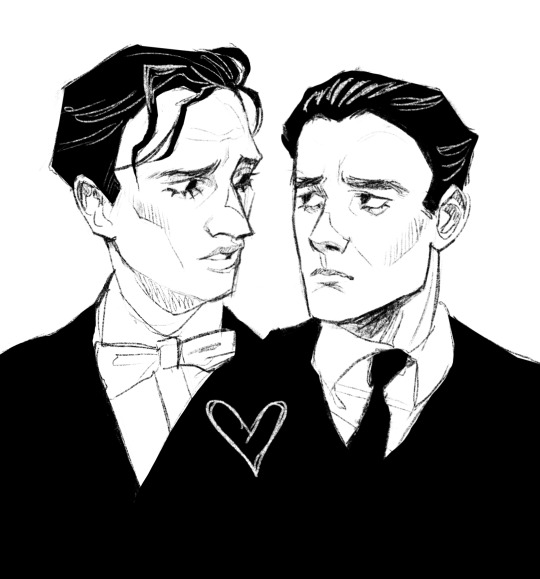
According to the Library of Congress, 75% of all silent films are completely lost. It's tragic to me that so many films will never be seen again. I wanted to do a series of drawings in which I make tributes to these lost films based on the information available. Idk I'm a nerd ok
Different from the Others (Anders als die Andern) was a German film that came out in 1919. The story followed two men and their romantic love for eachother; social criticism, however, leads one man to commit suicide after he is outed. The film argues for the inclusion and normalization of homosexuals, and argues against the law at the time, which stated that homosexuality was a criminal offense. The film is the first of its kind to depict homosexuality in a positive light.
It amassed controversy upon its release and was quickly pulled from public theaters. Despite the backlash, many viewers were reportedly "moved to tears" by the tragic ending. The Weimar Republic enacted censorship laws, and the film henceforth was only allowed to be shown in private viewings to psychiatrists and doctors. Later, the Nazis destroyed all remaining copies, with only fragments of the film and photos surviving. It is now considered a partially lost film, given that only a few segments remain.
#different from the others#anders als die andern#conrad veidt#reinhold schünzel#magnus hirschfeld#silent films#silent film#lgbtq#lgbtq history#queer history#my art
166 notes
·
View notes
Text
THE BEST OF DANIEL BRÜHL

It’s dumb, honestly.
You get this seemingly brilliant idea of turning to foreign films so you’re forced to read subtitles and focus—a problem you’ve been noticing of late—but in doing so, you end up with a more destructive distraction.
“Who’s that guy, again? The one in all those international productions?” That’s how I found myself on my Daniel Brühl marathon-turned-obsession.
It was his role as the cute Nazi in Inglorious Basterds that first put him on my radar. Over the years, I would see him in The Fifth Estate, Burnt, Woman in Gold, The Zookeeper’s Wife, and The King’s Man. Midway through All Quiet on the Western Front, I was like, “All this needs is that German actor…” and I had to chuckle when he later appeared on screen. I also checked out the first season of The Alienist because I was intrigued by what he and Dakota Fanning as leads would do with such a spooky-looking show.
Adorable as he was in his breakout role in Good Bye, Lenin!, it was his performance in the critically-acclaimed Rush that caused me to spiral. Similar to when Benedict Cumberbatch took on the modern version of Sherlock, it was like seeing Brühl with new eyes. His playful take on Helmut Zemo in The Falcon and the Winter Soldier was the final nail in the coffin. I don’t imagine it’s all too different from what Tom Hiddleston did to fans of Marvel as Loki.
I’m actually at the tail-end of this obsession now that I’ve seen everything I can get a hold of—around 39 films, two TV shows, a documentary, a music video, countless interviews, a bunch of ads, and a handful of fan cuts—but he has a lot of works worth recommending so I thought I would share them on here. This will mostly be a subjective list with priority on projects I found most interesting which showcase his range best. Like, I enjoyed The Bourne Ultimatum but he was on screen for a total of 2 minutes so I wouldn’t include that here.
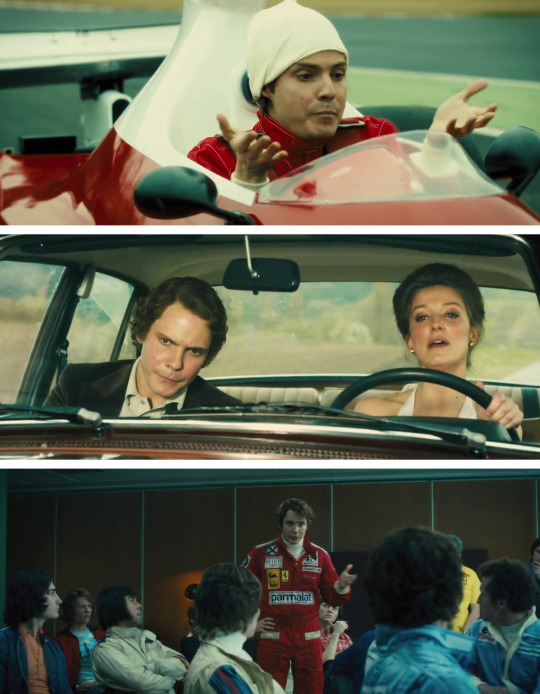
RUSH (2013)
This biographical sports film written by Peter Morgan—the man behind The Crown—centers on the rivalry between Formula One drivers James Hunt and Niki Lauda in the 70s. Not a fan of F1 or sports in general. I have nothing against either, just zero interest. But this character-driven film, much like Ford vs Ferrari, had me at the edge of my seat the entire ride. And it surprisingly has one of the best meet-cutes—and accidental wingmen—I’ve seen yet.
Brühl delivers an Oscar-worthy performance in this role. For someone who needed a lot of convincing he could do the character justice, he truly went above and beyond. For one, he befriended and studied Lauda, the iconic F1 figure he was portraying. No easy feat considering Lauda being, well… Lauda. In interviews, Brühl recounts the story of the memorable invite he got from Lauda to meet in Vienna. This would be their first meeting and Lauda told Brühl outright that he should only bring hand luggage so he can piss off if they don’t like each other.
He would end up staying a few days and buying additional clothes.
He also spent a month in Vienna to nail the accent, making sure to capture the arrogance and irony innate to it. And although he got driver training for the role, he also considered the tiniest details like which went on first: helmet or gloves? There was also the tricky business of looking graceful entering a tiny F1 car—a bigger challenge for Chris Hemsworth who plays Hunt—but an obstacle all the same.
All the hard work paid off. It was well-received by audiences, critics, and the F1 world. The first time Lauda saw the film he went, “Holy shit, that’s really me”. Lauda’s friends thought he did voiceover work for it. Director Ron Howard was so pleased with Brühl’s performance that he went out of his way to show an unfinished cut of the movie to the producers of The Fifth Estate (2013). This gracious act would land Brühl the co-lead role opposite Benedict Cumberbatch.
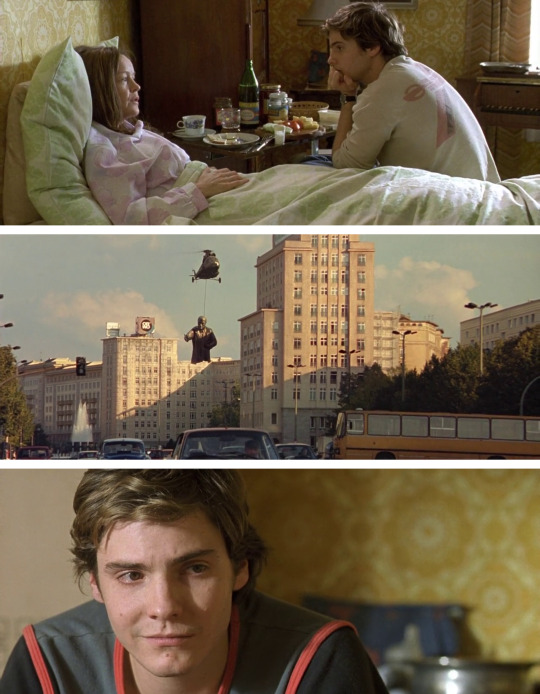
GOOD BYE, LENIN! (2003)
Can't tell if it's just because the two films have the same composer and were created around the same time, but this tragicomedy set in East Germany reminded me so much of my beloved Amélie. This is definitely more dramatic and political but it has that same mix of whimsy, heart, and charm.
With its budget, it was meant to be an indie film, but the story of a son who would recreate a faux-socialist world to keep his mother alive captured the heartstrings of audiences, not just in Germany but also worldwide. Brühl plays the son and his success with this film was a double-edged sword: although it would open doors for him internationally, he would also be typecast as the “nice guy” in his home country.

INGLORIOUS BASTERDS (2009)
This has one of the best, most intense opening sequences in all of cinema… and one of the greatest villains. In this wild alternate universe from Quentin Tarantino, he rewrites the ending of World War II. It’s the right balance of dark, hilarious, and entertaining—my favorite from the auteur’s works. Here Brühl plays a cute and charming Nazi, which is very confusing to the senses.
Aside from Brühl, it was also my first introduction to Christoph Waltz, Michael Fassbender, and Melanie Laurent—all fantastic European actors who’ve crossed over to Hollywood after the success of this movie. “Crossing over” seems ubiquitous now but, at that time, giving most of the lead roles to then relatively unknown actors must have been a risk. But for this, it was necessary. Language plays a huge part in this trilingual film and casting native speakers grounded it in authenticity. Tarantino originally had Leonardo di Caprio in mind to play Hans Landa. Whether he meant for him to learn German or to speak English with a German accent, who knows. Either way, it’s safe to say that would have been a different film.

THE EDUKATORS / DIE FETTEN JAHRE SIND VORBEI (2004)
This anti-capitalist film, which has become a cult classic, captures the spirit, idealism, recklessness, and angst of young revolutionaries who just want a better world. Where one stands on the measures taken, or even their sentiment, can be considered a litmus test. With or without reference to this quote from the movie—“Under 30 and not liberal, no heart. Over 30 and still liberal, no brain.”—is up to the viewer.
There needs to be a suspension of disbelief for the series of events that takes place but the setting is necessary for the clash of worlds to happen. It’s not a perfect movie but the issues they debate about in length… they’re still discussions we’re having nearly 20 years later.
p.s. this has my favorite behind-the-scenes of all of Brühl’s projects. Though he hasn’t lost his sense of humor, he seems to have become more reserved as he got older. HERE, at this period in his life, he’s a total goofball bordering on loose cannon.
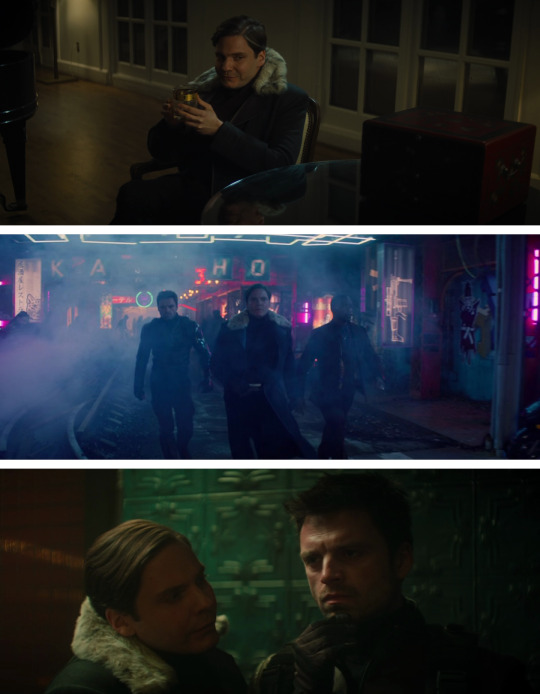
THE FALCON AND THE WINTER SOLDIER (2021)
Though I’ve enjoyed quite a few MCU movies, I’m not invested in the universe at all, so watching this wasn’t a priority. In fact, I was ready to settle on YouTube compilations made by devoted fans of all the scenes Brühl was in. Upon seeing clips, however, I got intrigued by his character so I still ended up watching the miniseries and also Captain America: Civil War (2016).
Both were better than I expected. Civil War is more serious, while TFATWS is more playful, but both face relevant issues along with formidable foes. Brühl’s villain in Helmut Zemo is fascinating because he tears the mighty Avengers apart with mere patience, fury, and intelligence… and his motivations are understandable. He lets his character loose in TFATWS—at one point, on the dance floor—and it’s magnificent. His mission is still the same, but this time he does it with a lot of charm, humor, and fabulous Sokovian style. A Turkish delight, personified.

ME AND KAMINSKI / ICH UND KAMINSKI (2015)
Brühl’s Sebastian Zöllner is a repulsive and sleazy journalist who has greasy hair and wears too much cologne but I can’t get enough of his chaotic energy. His magnum opus is hitched on a legendary artist dying and his fantasy is to turn the orphaned daughter into a sugar mommy. It’s all kinds of messed up but he plays the hell out of the smarmy dirtbag so it’s a lot of fun.
This is Brühl’s second collaboration with Wolfgang Becker, who directed Good Bye, Lenin! Daniel Kehlmann, the writer whose eponymous book this film was based on, would later write Brühl’s directorial debut, Nebenan.

NO REGRETS / NICHTS BEUREUEN (2001)
This is reminiscent of the slightly problematic but highly enjoyable teen comedies and coming-of-age films of the 90s. It’s like an edgier Can’t Hardly Wait: boy goes through cringe-worthy measures to get the girl he’s long been pining for, his two closest pals have nothing but dumb advice to offer, yet he still ends up on the path to self-discovery. It’s awkward, chaotic, frustrating, and beautiful—but such is adolescence.
Brühl and his co-star Jessica Schwarz fall in love on the set of this film. And although they would break up years later, the tenderness between their scenes together is palpable and there’s something rather bittersweet about seeing that captured in perpetuity.
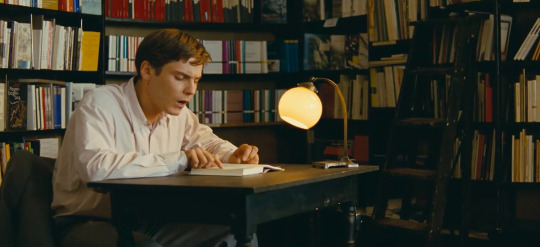
For a more straightforward rom-com, he has Lila, Lila (2009). It’s about a guy who passes off a manuscript as his own to impress a girl and the hilarity that follows. It’s on YouTube for those who need a fun and light watch.

THE ALIENIST (2018 – 2020)
Based on the novel of the same name, this moody psychological thriller set in late 19th century New York follows a psychiatrist—then called an Alienist—who investigates a series of grisly murders with methods still considered new and controversial at that time, such as psychology and fingerprinting. He gets by with a little help from his friends, John Moore, an illustrator for the New York Times, and Sara Howard, a society woman who works in the NYPD.
In the lead role of Dr. Laszlo Kreizler, Brühl plays the dark, complex, and mysterious Alienist whose study of mental pathologies and deviant behaviors reveals much of himself and his past.

LESSONS OF A DREAM / DER GANZ GROßE TRAUM (2011)
This film is loosely based on Konrad Koch, an educator and pioneer who brought football to Germany in the late 19th century. In the movie, the sport is used as a means to pique students’ interest in the English language and culture—both considered barbaric by the Germans at that time. A heartwarming tale of a teacher who overcomes insurmountable odds and inspires students along the way, it’s the German equivalent of Dead Poet’s Society.
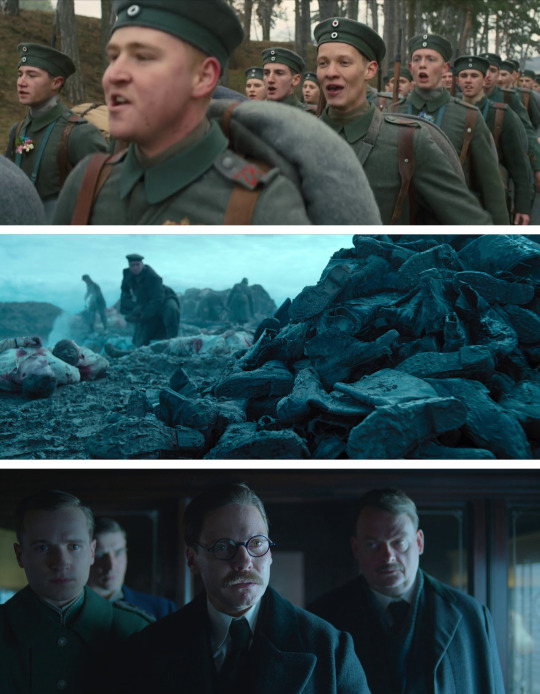
ALL QUIET ON THE WESTERN FRONT (2022)
This story, the third adaptation of the 1929 novel, “Im Westen nichts Neues”, conveys the futility of war like no other. There aren't as many films on World War I as there are on World War II, fewer ones that tell it from a German perspective, so this is doubly unique in that regard. Powerful watch but 10/10 not like to relive it again. Apart from producing it with his company, Amusement Park, Brühl plays Matthias Erzberger, the German State Secretary who pushes for armistice talks with the Allied forces.
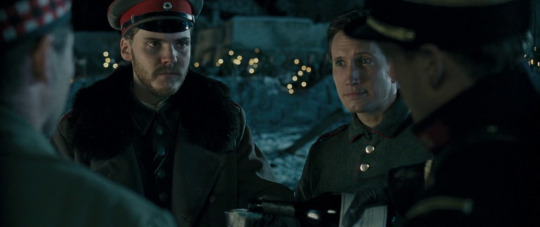
An ideal companion watch to this would be Joyeux Noël / Merry Christmas (2005), another WWI movie Brühl stars in, which depicts the unbelievable Christmas truce between French, German, and Scottish soldiers in 1914. His linguistic ability shines here as he shifts between German, French, and English effortlessly. (Half German, half Spanish, Brühl speaks a total of five languages: those three plus Spanish and Catalan.)

The Zookeeper’s Wife (2017) and Alone in Berlin (2016) also recognize the bravery of defiance at the height of tyrannical regimes. Although between the two, I would skip the latter.

JOHN RABE (2009)
This biographical film set in China tells the incredible true story of a German businessman who uses his Nazi Party membership to create an International Safety Zone in Nanking. This was in the late 1930s, during the Rape of Nanjing. In this six-week carnage by the Imperial Japanese Army—which includes sexual assault, mutilations, and killing contests—upwards of 200,000 Chinese are brutally murdered. The protective zone manages to save around the same number of civilians.
Brühl doesn’t play the titular Rabe, but his character, Dr. Georg Rosen, is one of few Westerners who decides to remain and protect Nanking even as conflict escalates. Dr. Rosen was a German Diplomat instrumental in the creation of the safety zone.
p.s. with all these heroic roles in his catalog, I’m convinced Brühl would be a frontrunner to play President Volodymyr Zelenskyy, should a movie be made about him and Ukraine’s conflict with Russia. You heard it here first.

NEXT DOOR / NEBENAN (2021)
This is Brühl’s directorial debut. Here he plays a darker, fictionalized version of himself. Definitely not for everyone but quite enjoyable if you’re familiar with his major works and public persona, appreciate the ingenuity of one-location movies, and delight in British-style meta humor.
Pre-requisite viewing for maximum enjoyment: Good Bye, Lenin!, Captain America: Civil War, and The Falcon and the Winter Soldier.
#daniel brühl#rush#niki lauda#good bye lenin!#alexander kerner#inglorious basterds#quentin tarantino#christoph waltz#fredrick zoller#the edukators#Die fetten Jahre sind vorbei#the falcon and the winter soldier#helmut zemo#baron zemo#captain america civil war#zemo#marvel#MCU#me and kaminski#ich und kaminski#Sebastian Zöllner#wolfgang becker#daniel kehlmann#no regrets#Nichts bereuen#jessica shwarz#lila lila#the alienist#dr laszlo kreizler#laszlo kreizler
180 notes
·
View notes
Text
Ranking Men's Costumes in Period Dramas - Part II: The Good
Part I: The Bad
This is the second part to my ranking of men's costumes in Renaissance period dramas. I selected 10 shows and films which I think have great costuming for the female characters and ranked them according to their costumes for male characters. I have noticed that even when women's costuming is great, men's costuming might be absolutely dog shit. And that's very much what we saw in the first part, where I ranked the five worst entries. For some reason shows and movies are afraid to put men, especially the characters who are supposed to be cool, manly and hot, into historical costumes. And I'm not even asking for historical accuracy, I just don't want my male characters living in the actual 1500s in basically modern leather jackets and pants. Like I don't watch period dramas for vaguely historically inspired modern fashion, I watch it for the historical setting, which costumes help create. This time we will be looking some rare gems that actually imo have really good costuming even for the male characters. For the five best entries, we'll go from worst to best.
5. Eizabeth R (1971)
Elizabeth R is incredibly committed to historical accuracy in it's outfits, especially for queen Elizabeth herself, many of her costumes being directly recreated from her portraits. It covers the whole reign of Elizabeth, so this commitment is especially admirable as the timeline is more than 40 years, including a stark shift in fashion from less structured and more toned down Tudor fashion to the extremes of the highly structured Elizabethan fashion. It's not perfect, The hair is not always great and like many others they fail at French hoods, though they are not upward pointing or pseudo crowns detached from the hood, so could be much worse.

The men's costumes are also very good. They are faithful to history, they wear stockings, very short trunk hose, ruffs and even have some structuring in their doublets and jerkins. However, the reason this is not higher is that the men's costumes especially, but also many other costumes beside Elizabeth's are looking a little sloppy. There's some structure yes, but the men's silhouettes are just not bold enough and they end up looking a little costumy. Even the codpieces are shrunk so small I'm not even sure if they are the half the time. Cowardice. Here's two Robert Dudley's costumes and an actual portrait of him. I think the second costume is probably an attempt at recreation of that portrait, but it's just kinda halfway there.
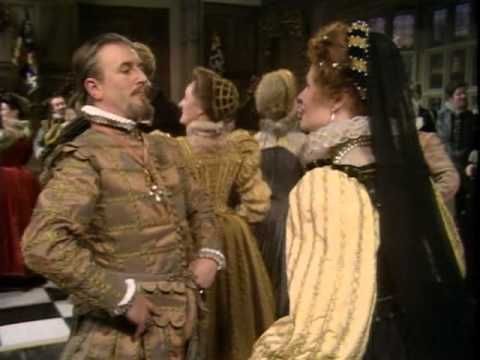
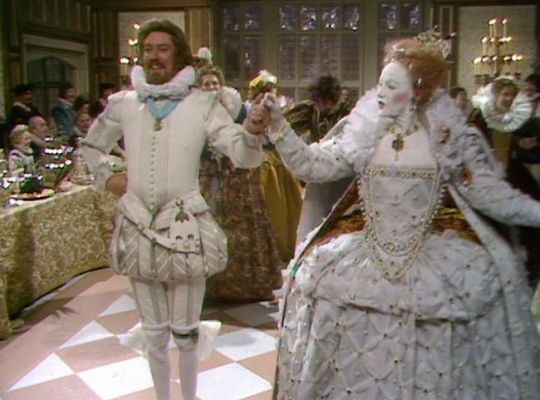
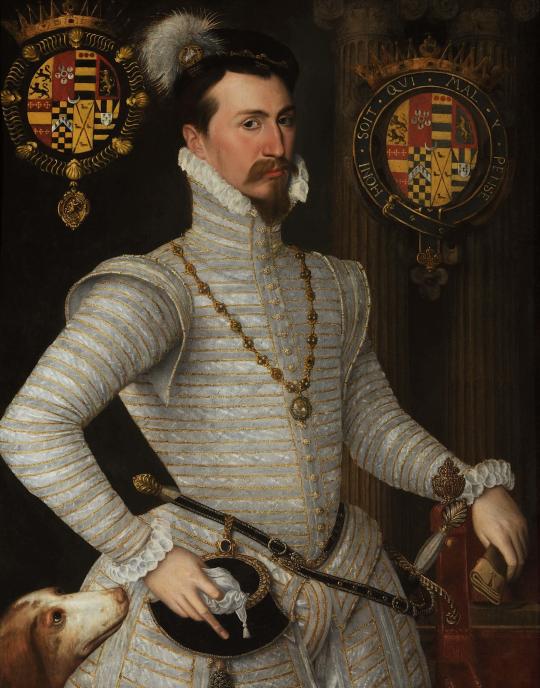
4. Taming of the Shrew (1967)
This film is set in Renaissance Italy, the women's costumes fit well to 1520s-30s. They are honestly really great and cohesive. My only gripe is that their bodices have a very 1960s shape and the make-up is a little distractingly modern. But the costuming is not attempting to recreate historical accuracy, rather they took the historical silhouette and basic elements and crafted a very over the top but cohesive look. I honestly love these very much.
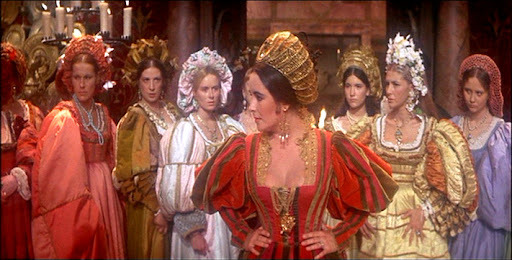


An interesting choice is made with the men's costuming, especially the main male lead, whose costume is based much more on the Renaissance German men's fashion of that period. His costumes resemble the over the top fashion of the German Landsknecht (first image below). In Italy (second image below) the doublets were also very voluminous and quite colourful but not to that extent as by the Landsknecht and literally no one, not even the other Germans, rocked that slashed style as hard.
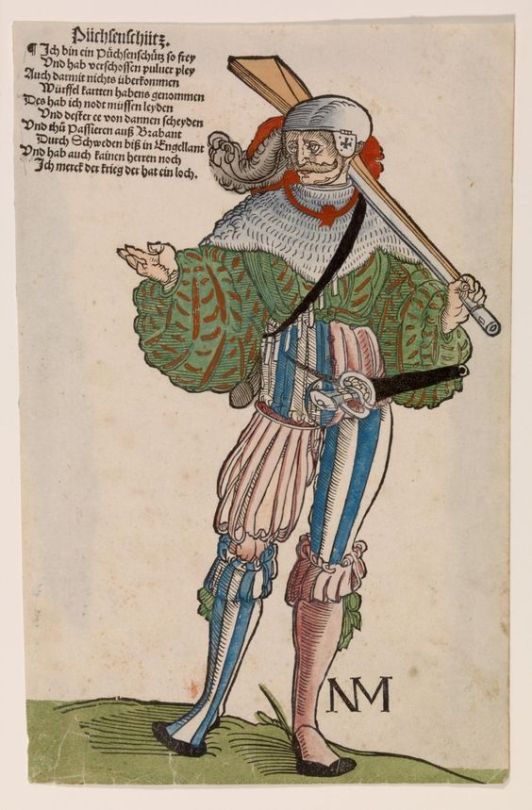

This is not really criticism though. In fact I respect that choice a lot. His costumes are certainly not historically accurate, but they do fit the bombastic aesthetics of the overall costuming, they are loud, large and not afraid to fuck around. This man oozes sex-appeal much more than any character with some modern plain black pants and leather jacket. This is how you costume a Renaissance man who fucks.
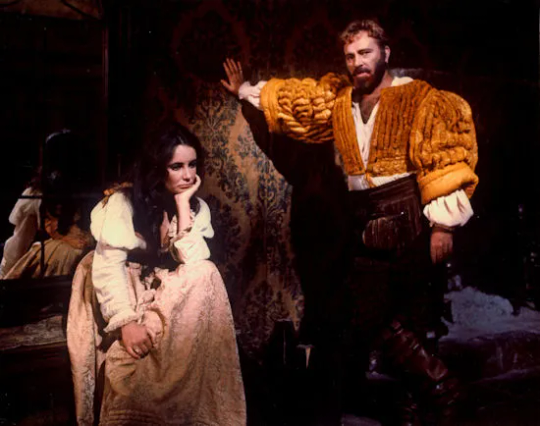
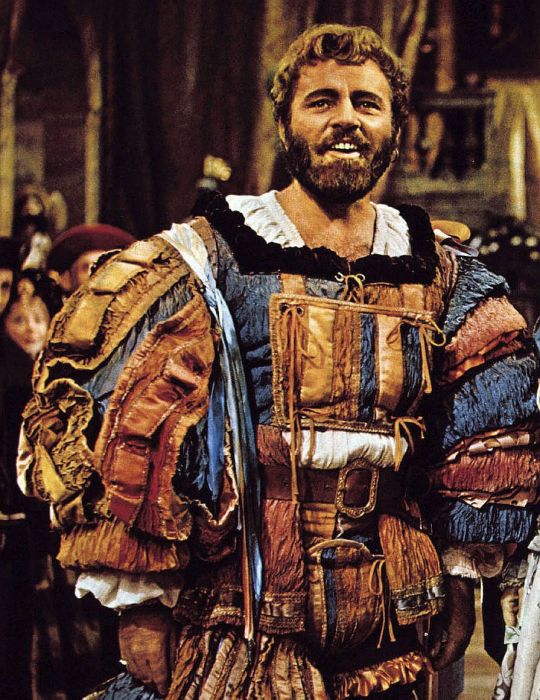
3. Tulip Fever (2017)
I am stretching the definition or Renaissance here a bit, I admit. This movie is set during the 1630s tulip mania, by which point the remnants of Renaissance fashion had already been left to the previous decade. However, I do think most of the movies and tv set in Baroque era also struggle with the men's costumes. Though not as much, because black was fashionable for everyone, the cod piece was gone, trunk hose were replaced by more palatable Venetian hose, fashion was much more stripped down from embellishments, leather was not uncommon in jerkins and appeared even in doublets and hose and the Hollywoods beloved boots became as actual fashion items. The men's silhouette in this period is very silly in my opinion and people seem to agree because it's usually skipped in costuming, but overall the period seems to fit modern masculinity standards much more easily than Renaissance era.
But I just really wanted to include this because the costuming is absolutely stunning. I have not watched the movie and probably never will because the post production was an absolute mess and it apparently came out as just a bad movie, which is a shame, but the costumes are so good. The ruffs are perfectly crispy. The buttons are dense and look just right. The shoes, both boots and otherwise are exactly right. The fabrics are honestly perfect. The silhouettes are just as goofy as they are supposed to be. And the women too have perfect silhouettes. All the details are just simply perfect. You rarely find costuming this meticulously created with historical details and great construction.
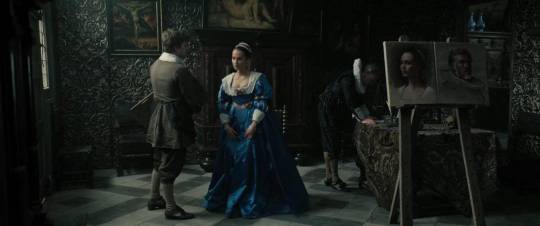

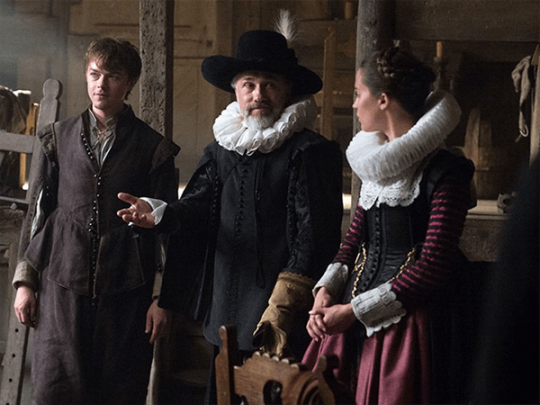
Honestly these top three could all be the best one. This final order was decided purely on which costumes i like more. And while I love the women's fashion of this period, I think the men's fashion is kinda stupid and boring, so I don't like these costumes on aesthetic level as much as the top two.
2. Romeo and Juliet (1968)
This movie is a perfect counterpart to the movie with the worst men's costuming which I talked about in the first post, Rosaline. They are both set in Italy around very end of 15th century and retell Romeo and Juliet. Both have very good costuming for female characters but obviously I think differ greatly in the male character costuming department. Romeo and Juliet costuming takes some artistic liberties to create a heightened reality quite similar to Taming of the Shrew costuming, but follows history much more closely. The colors are bright, the hose are tight, the giorneas are voluminous, the sleeves are long and massive and the cod pieces are prominent. Even the hair is perfect, even for women, they even use hairnets. I imagine the hair was quite easy to get right as hairstyles in 60s and 70s were basically lifted directly from 1400s Italian hairstyles. The men are even wearing appropriate hats??? Amazing.


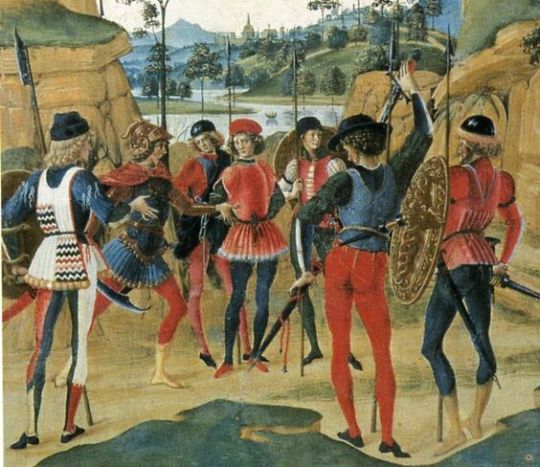
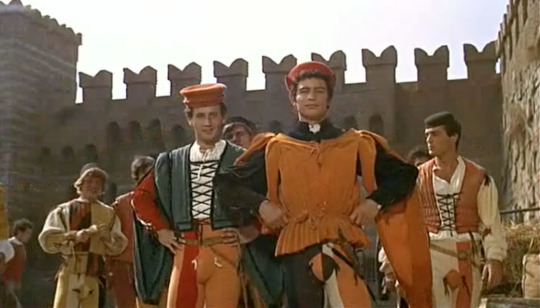
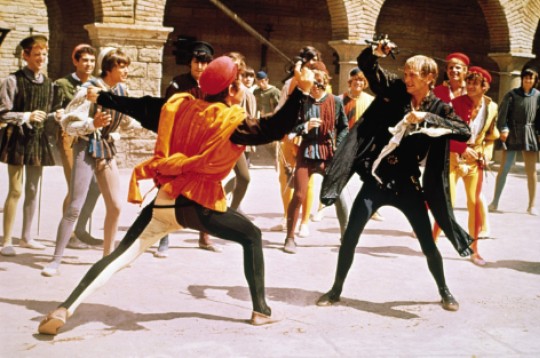
The costuming perfectly captures the era, but they still clearly had fun with the costumes too. Honestly even though I appreciate the meticulously recreated historically accurate costuming, like in Tulip Fever, I tend to like more costuming that does take some artistic liberties to create a distinct look and atmosphere for the movie or tv show. There's some small things they don't get quite right, like having standard lacing instead of ladder lacing, metal eyelets (which would become a thing as late as in 1830s) and most egregiously Juliet in one scene has this very dumb supportive undergarment without even shift under it (first picture below)?? The outer garments were supportive during this era, there was no such thing as supportive undergarment. Shift was the only undergarment. But I will forgive these errors because the costuming is overall so fun and gorgeous. And they did get some details so so right, like look at Romeo's arming doublet (second picture below)! It has Lombardian sleeves!! This was a very specific style of arming doublet for this era and place. However those errors does prevent it from taking the first place. Which leads us to...


1. Orlando (1992)
This movie has Tilda Swinton in flamboyant Elizabethan men's clothing. That's all.


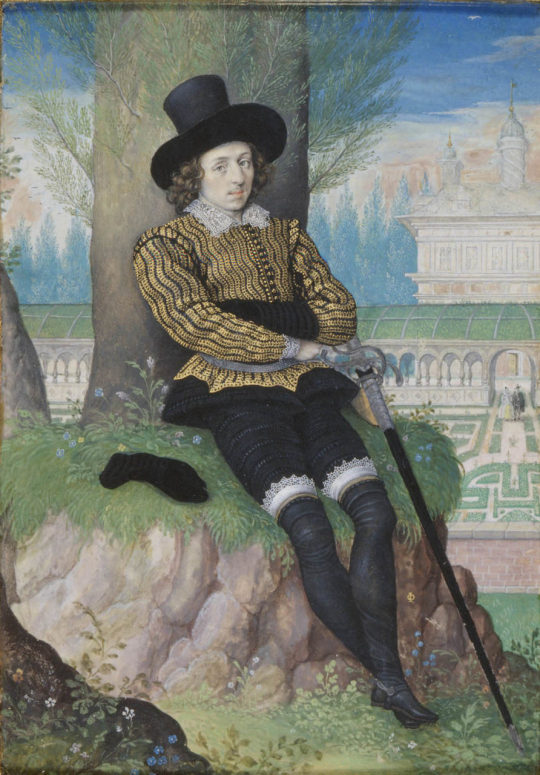
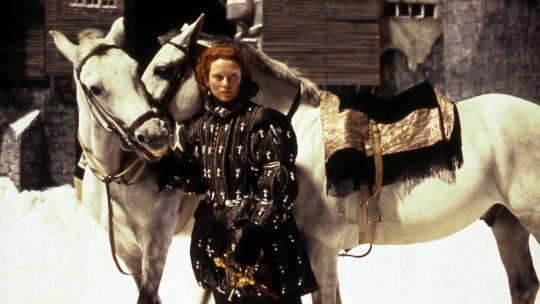

Okay, I that is all that needs to be said, but I will say more. This movie spans centuries and shows excellent costumes from several different periods, but I will focus on the Elizabethan costumes only for the sake of this post. The costuming is not super historically accurate in all the detailing, and clearly not trying to be, but it is always impeccable. Even while it takes artistic liberties and the story has an immortality fantastical element it still captures the men's fashion's silhouette much better than any other movie or tv show I know of set in this period. It does that better than the "we recreated these portraits" Elizabeth R. But what really makes this the best in my humble opinion, is that the movie is not afraid of the effeminate and emasculated modern perception of Renaissance men's fashion, no, it leans into it. The thole story is very much about gender and gender fuckery. Tilda Swinton plays the titular Orlando who is a cis man in Elizabethan era, becomes inexplicably immortal and later inexplicably turns into a woman for the rest of their several centuries. He is the embodiment of "I'm not sure if they are a butch or a twink" and as a bisexual I can only be grateful. But in all seriousness I think the costuming and the casting (queen Elizabeth is also played by a male actor) are so perfectly utilized to highlight the arbitrary construction of gender without needing to say it explicitly.
Conclusion
I have some closing thoughts. I took on this task as a way to show a point, which is that for some reason in Renaissance shows and film especially men's costuming is piss-poor, even when women's costuming is great. Male characters tend to have very bad costuming in Medieval media too, though this is also an issue for female characters. I don't think I have ever seen a Medieval show or movie with truly excellent costuming for anyone. In Renaissance media the issue is clearly not lack of skill or knowledge, they choose to do so. My thesis was that the producers think that the Renaissance men's fashion is too effeminate and too unsexy for the hot male very heterosexual lead, who the mostly female audience are supposed fawn over like the female characters. I still think it's very true.
Though there's an interesting trend I only noticed while doing this ranking; every entry (except the least bad) in the worst five list are from 21th century, and every entry (except Tulip Fever which is a little bit cheating anyway) in this best five list are from 20th century. I have some theories on why it turned out this way. First is that the studios have become increasingly more concerned with growing profits so they don't take risks and they put pressure on movies and tv shows to be as broadly appealing as possible. This means they can't just make period dramas for the core audience of period dramas, aka mostly women who are history nerds, so they pander to the modern sensibilities in costuming and not to the people who love to see actual historical costuming. Secondly, I think this might also tie to the broader conservative backlash against loosening of gender roles and broader queer acceptance. Among the core audiences of period dramas there are two distinct groups, queer nerds and conservative/centrist women, who don't want politics in their media, which is why they love historical stories because obviously queerness wasn't invented yet and people of colour didn't exist yet (they were and did). (They are not always this extreme, but you get the point.) As men wearing dresses has become a culture war issue, I think the studio executives are afraid that anything not masculine enough in modern standards might cause the more conservative audiences to turn on them. Even if they knew about the queer nerds, they wouldn't care about them.
This bears repeating: cowards.
As a thank you for reading all the way to the end I will leave you with the image of Tilda Swinton in mid 1600s men's clothing. You are welcome.
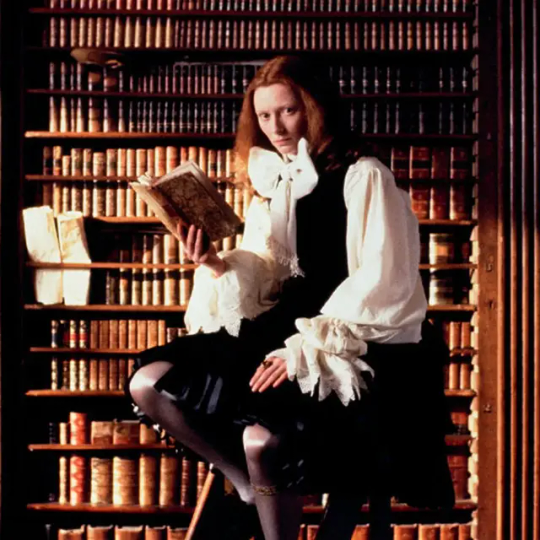
Part I: The Bad
#fashion history#history#historical costuming#costuming#renaissance fashion#renaissance costuming#film costuming#historical men's fashion
125 notes
·
View notes
Note
Hello Neil!
Today again I read about the casting process of The Sandman’s Lord of Dream and that the most convincing reason to choose Tom in the end was his voice and the way he delivered the lines so intensely perfect. I was wondering if you know about the the dubbing voice in other countries and if you had any influence on that. That’s because, and I am sorry for the dubbing actor in THIS special case, I highly criticize the voice of Morpheus in German. It is the complete opposite of Tom’s tone and rhythm. Honestly, I couldn’t stand it for more than 2 episodes and nearly gave up. Fortunately my husband convinced me to watch The Sandman in the original language and BOOM - I was hooked and since then I am a huge fan of The Sandman, the comics and it let me to dive into your awesome worlds. So, sounds and voices are so immensely important. I know not everyone is able to watch movies in OT but I wish everyone could enjoy this masterpieces as authentic as possible.
Hopefully you can get this as a well-intentioned feedback and tell us if there are in fact possibilities for writers or directors to take care of the dubbing of their screen / film adaptions.
Thank you for enriching my little world.
Best regards!
Klara
I'm afraid we don't have any say in the casting or dubbing of foreign voices. We just have to hope.
325 notes
·
View notes
Text

THURSDAY HERO: Mildred Harnack
Mildred “Mili” Harnack was a writer and academic from Wisconsin who moved to Berlin with her German husband in 1930. As Hitler rose to power, Mili created the largest resistance group in Nazi Germany and was targeted for execution by the Fuhrer himself.
Mili was born Mildred Fish in Milwaukee in 1902. Her father William was a teacher, and her mother Georgina was an activist for women’s suffrage. Mili had a natural facility with languages, and was fluent in German by the time she reached adulthood. Throughout her life, Mili loved German literature and culture. She attended the University of Wisconsin in Madison, where she majored in English literature. Mili lived in a rooming house popular with writers, and worked as a film and drama critic for a local newspaper.
After receiving her BA, Mili went on to earn an MA in English in 1925. The next year she moved back to Milwaukee and worked as a lecturer at the Milwaukee State Normal School (now the University of Wisconsin – Milwaukee.) She met Arvid Harnack, a German economist and lawyer who was studying at the university on a Rockefeller fellowship. Arvid was from a prominent family of German intellectuals. After a whirlwind love affair, they were married in August 1926 at her brother’s farm. Arvid’s fellowship ended and he returned to Germany, followed by Mili the year later, after she completed a teaching session at Goucher College in Baltimore.
In Germany, Mili worked on her doctoral thesis and lectured at universities in German cities Jena and Giessen. The country was plunging deeper into political turmoil, and the Nazi party was rising to power amid the chaos. More than half of Mili’s students were outspoken Nazis. She moved to Berlin in 1930 to be with her husband, and began working as an assistant lecturer in English and American literature at the University of Berlin. Mili lectured about her favorite English and American writers including Ralph Waldo Emerson, Walt Whitman, Thomas Hardy and George Bernard Shaw. She was so popular with students that in just a year and a half, enrollment in the class tripled.
Mili connected with other American expatriates in Berlin and formed a literary salon where anti-Nazi academics and intellectuals could express themselves freely. By 1934, the Nazi secret police were everywhere and the salon was disbanded. Fellow ex-pat Martha Dodd, a close friend of Mili’s, later described her Berlin salon as “the last of the meager remnants of free thought.” Many of those who had participated in the salons continued to meet in the Harnacks’ living room but instead of discussing literature, they planned anti-Nazi political activism
Meanwhile, Mili achieved renown as a writer. She published essays in prominent German literary journals until the mid-30’s, when magazines started to print only “approved opinions” (in support of Hitler). She was able to continue working as a translator, and her German-language translation of Irving Stone’s biography of Vincent van Gogh, Lust for Life, was published in 1936.
Mili returned to the U.S. on a book tour in 1937, and her old friends were shocked at the drastic change in her personality. Earlier she had been friendly and easy-going, but four years living under Nazi rule made Mili anxious, stiff and guarded. She’d had to wear a metaphorical mask to survive in the totalitarian German state, and couldn’t shed the mask even when she left Europe. Mili’s family urged her to stay in the U.S. but she was determined to return to her husband and her political activism group, now called “The Circle.”
Mili’s unassuming manner combined with an extremely sharp intellect enabled her to penetrate the highest circles of German politics and diplomacy. She used these connections to get exit and travel visas for Jewish friends and colleagues, among them prominent publisher Max Tau. Mili also surreptitiously gleaned information from highly placed contacts, which she transmitted to fellow members of the resistance.
Mildred was fired from her teaching job at the University of Berlin because of her political beliefs, and she began teaching at night school, where her students were mostly working class or unemployed. She recruited many of them to join The Circle. The group published anti-Nazi leaflets, written by Mildred, and secretly left stacks of them in public places throughout the city.
German intelligence called them “the Red Orchestra” and falsely smeared them as communists working for the Soviets. Undeterred, the group increased their activities and cooperated with other resistance units. Around this time Mili wrote, “I saw it clearly before my eyes. From then on our work not only implies the risk of losing our freedom, from now on death was a possibility.” Led by Mili, The Circle became the largest resistance group in Nazi Germany. They incited civil disobedience against the Nazi regime, documented Nazi atrocities, and transmitted military intelligence to the Allies.
In the summer of 1942, the Nazis intercepted radio transmissions that revealed the identity of prominent resistance fighters including the Harnacks. On September 7, Mili and Arvid were arrested by the Gestapo and imprisoned. Arvid was tried by the Reich Military Tribunal and sentenced to death on December 19. He was hanged three days later at Plotzensee Prison.
Mili languished in a squalid prison cell for months, where she was tortured and contracted tuberculosis. She went on trial and was sentenced to six years in prison. However, Hitler heard about the American woman who fought so effectively against his regime, and he ordered a new trial for Mili. The kangaroo court delivered a pre-determined death sentence, and at Hitler’s explicit request Mili was beheaded by guillotine on February 16, 1943. Her last words were, “And I have loved Germany so much!” After her execution, Mili’s body was given to an anatomy professor at Humboldt University to dissect for research. After he finished, he gave the rest of her remains to a friend of hers, who had Mili buried in Zehlendorf Cemetery in Berlin.
The only writing that survived from her time in prison were a few translated lines from Goethe: “In all the frequent troubles of our days/A God gave compensation – more his praise/In looking sky-and heavenward as duty/In sunshine and in virtue and in beauty.”
Mildred’s brave actions and tragic death have not been forgotten. In Berlin, a street and a school are named for her, and in her native Wisconsin schools observe Mildred Fish Harnack Day. The University of Wisconsin-Madison hosts an annual Mildred Fish-Harnack Human RIghts and Democracy Lecture, and a sculpture of Mili was unveiled in Madison in 2019.
For fighting Hitler at the cost of her own life, we honor Mildred Harnack as this week’s Thursday Hero.
Image: Gestapo mug shots of Mildred taken after her arrest in 1942.
79 notes
·
View notes
Text
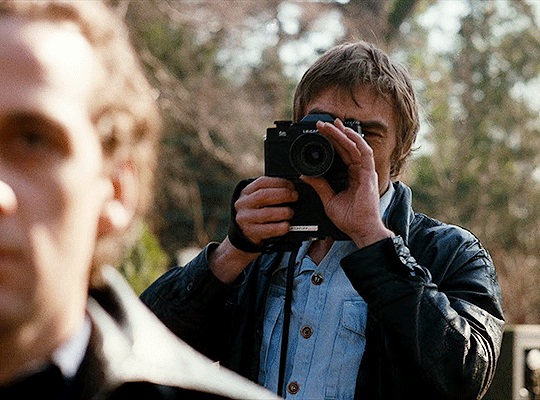


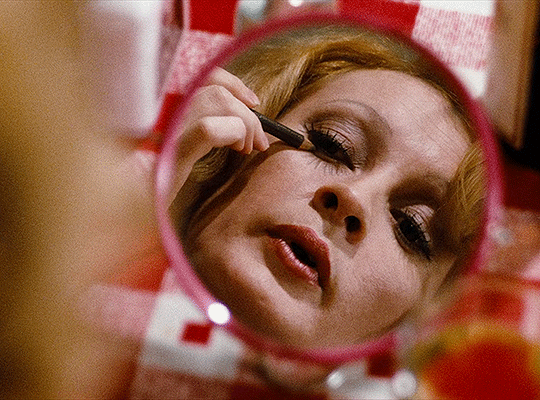


"Fassbinder's film criticizes the bloodthirst of the 1970s German media in a similar manner to The Lost Honour of Katharina Blum (directed by Volker Schlöndorff and Margarethe von Trotta). However, Fassbinder's film goes further by criticizing the overwhelming selfishness present in contemporary society. Nearly everyone who Mother Küsters encounters is self-serving and unconcerned with comforting her. Fassbinder also clearly criticizes the small German Communist Party's moderation and "armchair activism".
Mother Küsters' Trip to Heaven (1975) Directed by Rainer Werner Fassbinder
#Mother Küsters' Trip to Heaven#1970s#uservintage#filmedit#by natty#worldcinemaedit#userfilm#fruitblr#germany#rainer werner fassbinder#userkraina#usercande#userpavlova#userraffa#filmgifs#moviegifs#fyeahmovies#usermedia#userthing
160 notes
·
View notes
Text
Rebecca Whitehurst never wants to set foot in a school again.
She also wants all teachers, especially female ones, to wear bodycams, to have CCTV in every classroom and for teachers to operate in pairs. “I think teachers should never be alone with children, there should always be someone else there. I know it is dramatic but I don’t want what happened to me to ever happen to anyone else,” she said.
The views of Whitehurst, who is married with two children and has been a modern languages teacher for more than ten years, have been shaped by what she describes as a “modern horror story”.
Last week the 46-year-old wept as a jury at Manchester’s Minshull Street crown court cleared her of two charges of sexual activity with a child and one of sexual communications. She had been accused of a sexual act with a 15-year-old pupil in the back of her Volvo and of sending him explicit texts, including a photograph of her breasts.
The court heard that the teenager, who had declared he was in love with Whitehurst, became obsessed with her and lied about or faked the messages. The boy, who watched pornography involving older women, assaulted her in her classroom and sent an abusive message to her daughter, the court was told.
The family spent £43,000 fighting the case, which dragged on for three years. If convicted she would have faced up to 14 years’ in jail.
Speaking from her home in Cheshire where her husband, Billy, an accountant, has “been unbelievably supportive”, she said her experience at times felt like a television drama.
It unfolded against the backdrop of a rising number of schoolboys watching online pornography, and pupils’ mental health becoming a frontline problem for many schools.
Last year, an Ofsted report found 90 per cent of girls and 50 per cent of boys polled by the schools inspectorate said they had been sent explicit pictures and messages they did not wish to see. A survey for the British Board of Film Classification last year found that almost half of 16 and 17-year-olds had recently seen pornography. Figures from NHS Digital found that one in six children in England had a probable mental health disorder last year, up from one in nine in 2017.
Whitehurst’s ordeal started in April 2019. The boys’ school where she taught French, German and Spanish had paid for her to attend a three-day course on mindfulness. She was asked to teach the subject — not to lower the stress of high-achieving children in the run-up to exams, which she had suggested, but to children on the inclusion register, who have special educational needs and disabilities. “I said yes because I am that sort of person,” the Sheffield University graduate said, but admitted to being nervous about teaching a “wishy washy” subject to children who may have experienced significant trauma.
In an early session with the group of ten boys the 15-year-old who would go on to accuse her said he was hearing voices in his head telling him to kill someone. “I thought OMG,” she said. “As soon as I could I reported it on our safeguarding system . . . I reported it on there and thought someone would talk to me about it, but no one did.”
As the sessions continued the teenager “latched” onto Whitehurst, who tried to give him “sensible advice” via the school’s email system.
He talked about being in a gang and, in an area of the city linked to the Manchester bomber, Whitehurst also feared he was at risk of getting involved in terrorism. When he started to talk about how he had “this big secret” and she was the only person he could tell it to, she made, she admits, a critical mistake.
“He had said he wants to kill people and is in a gang,” she said. “He was talking about going to the mosque. All these things were adding up in my head. I thought there was a bigger picture and I would find out about it and report it.
“I tried to get him to talk to staff who were better trained in such matters but he said no. He said he did not trust the school email which we were already communicating on. In one email thread he emailed me a ghost emoji and I realised he meant he wanted to tell me the secret on Snapchat. I downloaded Snapchat on purpose because I thought he was going to give me this big secret.”
Whitehurst said the secret was nothing to do with terrorism: “The secret was he was in love with me. I realised I had made an idiot of myself. I told him nothing like that was ever going to happen and there had been a misunderstanding. I told him I had to tell the school. He would say ‘they are not going to believe you’ and that I had made a mistake in giving him my Snapchat username. I should have reported it but I did not and I know now that that was an error.”
A few weeks later the teenager came into Whitehurst’s classroom when she was alone. He tried to force his tongue into her mouth, touched her intimately, slapped her face and spat at her. She tried to push him away, which he told the court he thought was encouragement.
“I do not think he knew how bad it was what he did; I know porn was available to him, he sent me lots of links which I never opened but I have an idea of what he watched,” she said. “I think he thought slapping me and spitting at me was sexy in some way.” Again, she did not report the assault. Whitehurst admits she was scared and also “again I thought I would be held responsible as I am the adult and he is the child”, but from then on things got steadily worse.
Over the coming weeks he gave her a necklace and sent naked images of himself which she deleted. He “begged” her to meet him outside school. Still worried about his state of mind, she met him several times in public places, including at a charity run she was doing in a Manchester park where she thought there was no risk of him “launching himself at her”.
At school Whitehurst volunteered for extra duties to ensure she was not alone. She applied for jobs in other schools.
In September 2019 she broke down in the playground when a colleague asked her if she was OK: “I said no and blurted it all out. She said she would have to take this to the head teacher.”
Whitehurst agreed with the head teacher that the matter would be reported to the police and the local authority safeguarding officer and that she would be suspended pending an inquiry. “My logic was, they will understand,” she said. “They will know he is difficult and that I wanted to help but mismanaged things.”
Whitehurst was shocked in her first police interview, two months later, when she heard that the boy had accused her of having sexual activity with him and sending him photos of her breasts.
The pandemic meant that the investigation dragged on. She did not hear anything until last year when police said they had downloaded data from both the phones, including a screenshot of a fake text conversation in whch she appeared to be suggesting sexual acts with the teenager outdoors.
“I thought, ‘I never sent those’. They did not look right. They were obviously fake. The language did not add up. I did not need a professor of linguistics to say that was not me,” she said.
“It was extraordinary that what he said was believed and I was not. He said it was consensual. And we were in love.
“I kept thinking the police will look at all this properly, tell me this will be dropped and say, ‘You poor woman’.”
As it became clear that the case would go to court Whitehurst switched lawyers. Her new team instructed an expert witness to look at the downloaded data from both phones. His report — which cost the family £8,000 — made clear there was no evidence that a photo of her breasts or a text suggesting outdoor sex acts had been sent by her or received by the teenager. Still the case was not dropped.
A week before court, Whitehurst says “calm descended”. She decided not to wear a face mask or hide her face and be “as brave as I could be”.
By video link the teenager gave contradictory evidence and admitted the assault on Whitehurst. The jury took less than three hours to acquit her.
Whitehurst’s case may be extreme but it is not isolated. There is a website on which teachers share dozens of accounts of false allegations. Teaching unions called last year for pupils who make them to be excluded and for fully funded mental health programmes aimed at boys.
Christian Harbinson of the law firm Thompsons solicitors, which represented Whitehurst, said: “An underfunded criminal justice system is unable to cope and that stretches out the agony for innocent people like Rebecca. It’s taken almost three years, since the allegations were first made, for her to clear her name, during which time Rebecca’s life has been on hold and her family have had to deal with an unimaginable level of stress and worry.”
Asked whether the teenager, now 18, would face an inquiry for possible criminal offences, Greater Manchester police said it had no intention to investigate “the child victim in this case”.
1K notes
·
View notes
Text
One of the classic criticisms of the British army in WW1 and at the Somme in particular is the way they just marched soldiers in lines towards the German trenches. There is some truth to that, and some formations did do something like that. The attack of the 7th Division on 14 July was pretty straightforward along those lines.
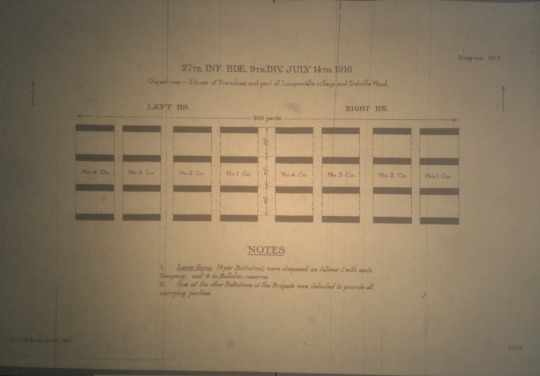
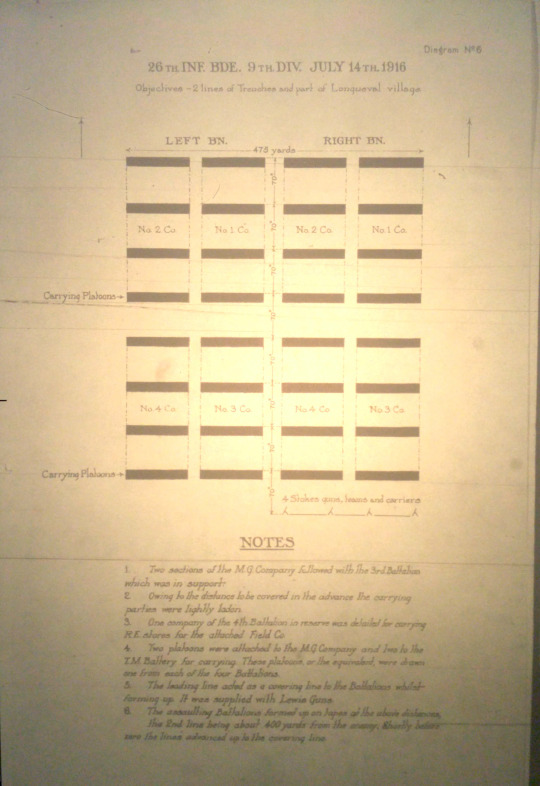
But while there are some basic similarities due to the practical realities of trench warfare, there was a hell of a lot diversity in the formations used throughout the battle.
Some comparisons for the opening of the battle on 1st July 1916. Here you've got a brigade each from the 30th and 18th Divisions in the same battle and over a similar frontage, 700ish yards but using different numbers of battalions, different formations of platoons and companies and a difference in depth.
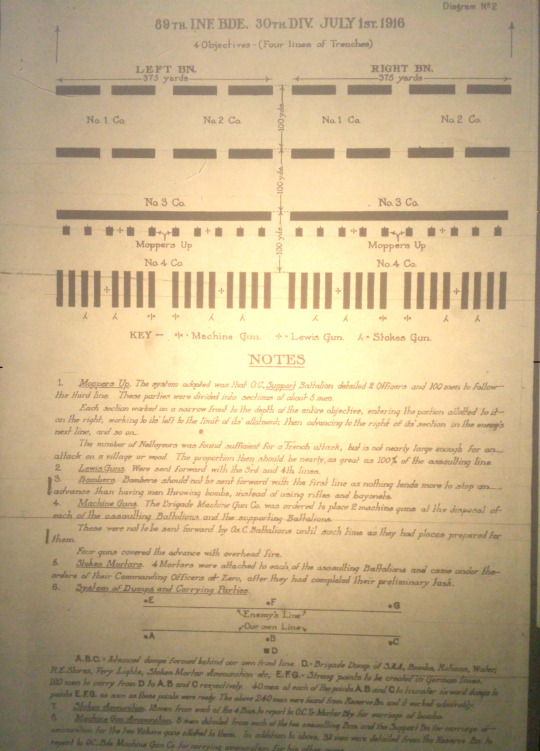

Again, two different divisions attacking in the same battle, this time on July 14th, adopted completely different formations for the attack. Their objectives and frontages were similar, but the methods were again quite different in formation and depth.
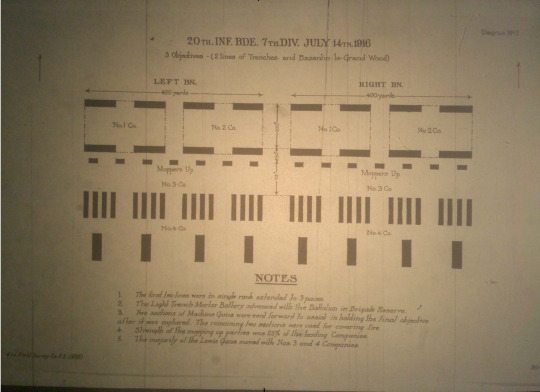
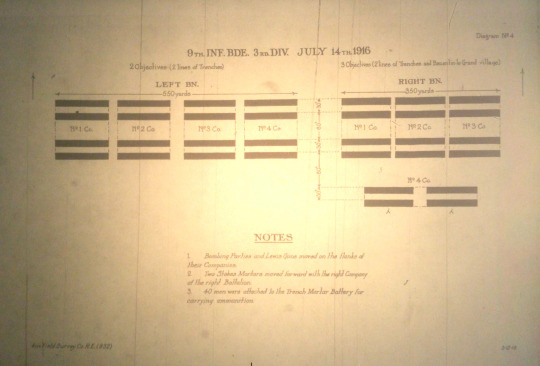
It's a bit cliche amongst WW1 historians that the generals weren't all incompetent dullards, but it's still pretty much the default view in the public imagination and I don't think recent WW1 films have done much to dispel that (not that they're aiming to anyway).
But even a cursory look tells you that most of these guys were professional soldiers who took some level of pride in their work and tried to come to grips with the realities of the war. They didn't always succeed, but most were open to trying new ideas and ways of doing things that wouldn't only be successful, but also reduced the number of their own dead.
80 notes
·
View notes